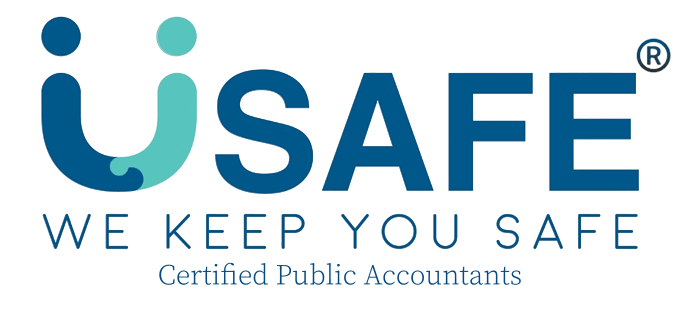IAS 37 Provisions, Contingent Liabilities and Contingent Assets – Accounting for Uncertain Obligations
1️⃣ Introduction: Understanding IAS 37 Provisions, Contingent Liabilities and Contingent Assets
IAS 37 Provisions, Contingent Liabilities and Contingent Assets sets principles for recognising and reporting uncertain obligations and possible gains.
In Singapore, where business transactions often involve guarantees, contracts, and litigation risks, IAS 37 ensures financial statements reflect obligations realistically. As a result, stakeholders gain a true and fair view of risk exposure and financial resilience.
2️⃣ Purpose and Scope
IAS 37 applies to all provisions, contingent liabilities, and contingent assets, except those covered by other standards (such as IAS 12 Income Taxes or IFRS 17 Insurance Contracts).
The objective is to ensure entities record a provision only when:
-
A present obligation arises from a past event.
-
An outflow of resources is probable.
-
The amount can be estimated reliably.
If any of these criteria is not met, the obligation remains a contingent liability and is disclosed but not recognised.
3️⃣ Definition of a Provision
A provision is a liability of uncertain timing or amount.
Typical examples include:
-
Legal claims or disputes pending settlement.
-
Warranties and after-sales obligations.
-
Restructuring or closure costs.
-
Environmental rehabilitation commitments.
Because timing and amounts are uncertain, management must apply judgement and discount expected outflows when the effect of time value is material.
4️⃣ Contingent Liabilities
A contingent liability is either:
-
A possible obligation from past events confirmed only by future uncertain outcomes, or
-
A present obligation that does not meet the recognition criteria because outflow is not probable or cannot be estimated reliably.
Such liabilities are not recognised but must be disclosed with a brief description of the nature and potential financial impact. Therefore, users understand the entity’s exposure to uncertain losses.
5️⃣ Contingent Assets
A contingent asset represents a possible gain from a future event such as a pending lawsuit or insurance claim. Entities do not recognise these assets until realisation is virtually certain.
Until then, they should be disclosed if an inflow of economic benefits is probable. Consequently, financial statements avoid overstating income or assets.
6️⃣ Measurement of Provisions
Provisions are measured at the best estimate of the expenditure required to settle the obligation at reporting date.
Methods include expected-value calculations for large populations (e.g., product warranties) and most-likely-outcome estimates for single events (e.g., court cases).
When effects are material, entities discount cash flows using a pre-tax rate that reflects current market conditions.
In addition, companies should review provisions at each reporting date and adjust them for new information or settlements.
7️⃣ Use of Provisions
Provisions should be used only for the expenditure for which they were originally recognised. They must not be used to cover future operating losses or general reserves. This requirement prevents earnings smoothing and maintains credibility in financial reporting.
8️⃣ Restructuring Provisions
Restructuring provisions arise when a formal plan exists and management has valid expectations among those affected. Recognise only direct costs necessary for restructuring — such as termination benefits and contract penalties. Future operating losses must not be included.
Therefore, timely communication and accurate measurement are essential for compliance with IAS 37.
9️⃣ Example: IAS 37 in Practice
Scenario:
uSafe Accounting Pte. Ltd. faces a legal claim from a client amounting to SGD 120 000. Based on legal advice, management expects a 50 % probability of loss and a best estimate of SGD 60 000.
✅ Under IAS 37 Provisions, Contingent Liabilities and Contingent Assets, uSafe recognises a provision of SGD 60 000 and discloses the uncertainty and possible range of outcomes.
As a result, the financial statements reflect prudence and transparency.
🔟 Disclosure Requirements
IAS 37 requires detailed disclosures for each class of provision, including:
-
Opening and closing balances.
-
Additions, utilisations, and reversals.
-
Nature and timing of expected outflows.
-
Major uncertainties and discount assumptions.
These disclosures help users assess the magnitude and timing of future cash flows. In Singapore, ACRA may review significant provisions for legal and contractual claims during financial reporting surveillance.
11️⃣ Common Errors
-
Recognising provisions without a present obligation.
-
Aggregating different risks into a single provision.
-
Using round-number estimates without supporting evidence.
-
Failing to reassess contingent liabilities each year.
Therefore, documented judgement and clear supporting calculations reduce audit challenges and enhance credibility.
12️⃣ Best Practices
✅ Create a provision register linking each case to supporting evidence.
✅ Collaborate with legal and operational teams to validate probabilities.
✅ Review and update assumptions each reporting cycle.
✅ Disclose methodologies and key inputs transparently.
Consequently, firms can apply IAS 37 Provisions, Contingent Liabilities and Contingent Assets smoothly and defend estimates during audit reviews.
Conclusion
IAS 37 Provisions, Contingent Liabilities and Contingent Assets ensures financial statements capture uncertain obligations prudently while preventing hidden reserves or premature income.
Therefore, for Singapore companies, consistent application of IAS 37 improves accountability, audit readiness, and stakeholder confidence — key values in today’s regulatory environment.
Disclaimer: This article is for informational purposes only and does not constitute any professional advice. Feel free to contact us to consult with our professional advisors team for personalized advice and guidance.




